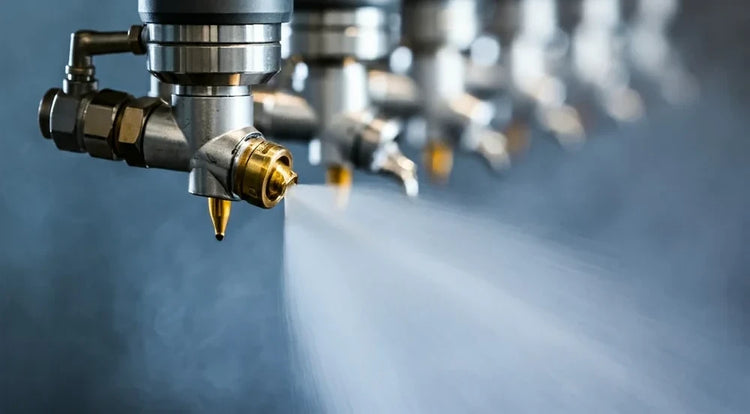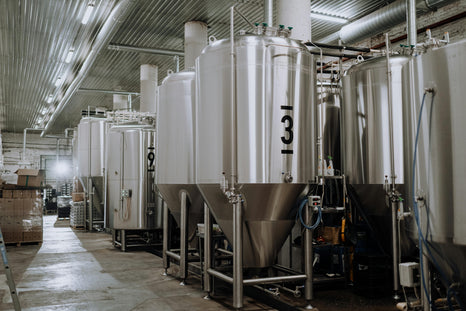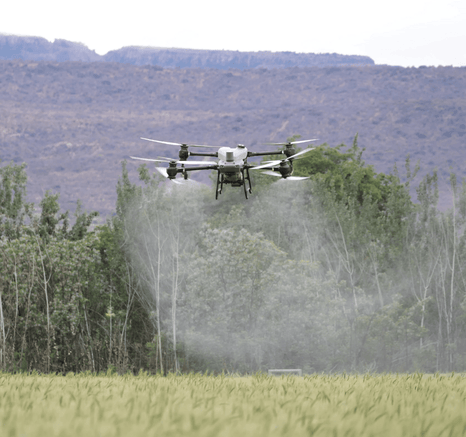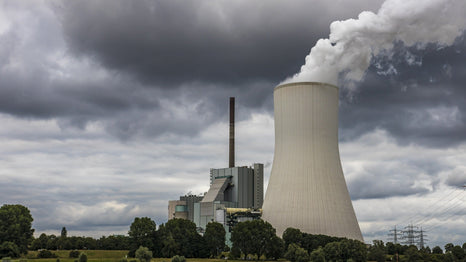If you've ever dealt with cleaning industrial tanks or equipment, you know it's not as simple as hosing things down and calling it a day. The right spray nozzle can mean the difference between a sparkling clean vessel and wasted hours, water, and energy. Whether you're in food processing, pharmaceuticals, chemical manufacturing, or brewing, choosing the proper tank cleaning nozzles is crucial for maintaining hygiene standards while keeping costs down.
Key Takeaways
-
The right nozzle saves you money: Proper selection can reduce water consumption by up to 40% and cut cleaning time significantly.
-
One size doesn't fit all: Different tank sizes, residue types, and operating pressures require different nozzle solutions.
-
Three main types exist: Static nozzles work for simple applications, rotary spray balls handle regular CIP systems, and rotary jet nozzles tackle tough residues.
- Smart placement matters: Even the best nozzle won't work well if it's positioned incorrectly or operating at the wrong pressure.
Why Tank Cleaning Requires Specialized Nozzle Systems
Think about what happens inside an industrial tank during production. Residues build up, products stick to walls, and contaminants can hide in corners. A general-purpose spray won't reach every surface or provide the mechanical action needed to remove stubborn materials.
Industries like food and beverage processing must meet strict sanitation standards. A dairy tank that isn't properly cleaned can harbor bacteria, compromising an entire batch. Chemical processors need to avoid cross-contamination between products. Pharmaceutical manufacturers face even tighter regulations around cleanliness and validation.
Beyond hygiene, there's a practical side. Water is expensive. Energy to heat cleaning solutions adds up. Labor time for manual cleaning cuts into productivity. The right industrial spray nozzles address all these concerns by delivering targeted, efficient cleaning that gets the job done the first time.
How Tank Cleaning Nozzles Actually Work
At their core, tank cleaning nozzles distribute cleaning fluid across interior surfaces using controlled spray patterns. But the way they do this varies quite a bit.
Static nozzles stay in one position and create a fixed spray pattern. They rely on spray angle and pressure to cover their designated area. Think of them like a fixed showerhead that always points the same direction.
Rotary nozzles add movement to the equation. They spin or rotate to sweep cleaning fluid across a wider area. This rotation can be powered by the fluid itself (self-rotating) or by an external motor.
The cleaning action comes from four main factors working together:
-
Flow rate: How much liquid moves through the nozzle per minute
-
Pressure: The force behind the spray, measured in PSI or bar
-
Spray angle: How wide the pattern spreads
- Impact force: The mechanical energy hitting the surface
When these elements combine properly, they create overlapping coverage zones that ensure every part of the tank gets cleaned. The goal is eliminating shadow zones where spray doesn't reach and preventing waste from over-spraying already clean areas.
Types of Tank Cleaning Nozzles
Let's break down the main categories you'll come across:
1. Static Nozzles
These are the simplest options. They don't move and create a consistent spray pattern in one direction. Static nozzles work well for small tanks, totes, or applications where you need to clean a specific area repeatedly. They're low maintenance since there are no moving parts, and they're typically the most affordable option.
Best for: Small vessels under 500 gallons, simple rinsing applications, or supplemental cleaning in specific zones.
2. Rotary Spray Balls

These spherical devices have multiple spray holes and rotate as fluid passes through. Rotary spray balls are the workhorses of CIP (clean-in-place) systems. They provide good coverage with moderate impact, making them ideal for routine cleaning and sanitation cycles.
The rotation happens naturally from the reaction force of the spray jets. They're reliable, relatively inexpensive, and available in various sizes to match different tank dimensions.
Best for: Medium-sized tanks (500 to 5,000 gallons), food and beverage CIP systems, routine sanitation cycles.
3. Rotary Jet Nozzles
When you need serious cleaning power, rotary jet nozzles deliver. These create concentrated, high-impact jets that rotate in programmed patterns. They excel at removing baked-on residues, heavy soils, and stubborn deposits that spray balls can't handle.
Advanced models feature self-cleaning mechanisms that prevent clogging and allow them to work with higher-solids fluids. Some use gear-driven rotation for precise, repeatable coverage patterns.
Best for: Large vessels (5,000+ gallons), reactors, process tanks with heavy residue, applications requiring validated cleaning.
Quick Comparison
|
Nozzle Type |
Coverage |
Pressure Needed |
Flow Rate |
Best Applications |
|
Static |
Limited, fixed |
Low to medium |
Low |
Small tanks, targeted cleaning |
|
Rotary Spray Ball |
360° moderate |
Medium |
Medium |
CIP systems, routine cleaning |
|
Rotary Jet |
360° high impact |
Medium to high |
Low to medium |
Heavy residue, large vessels |
Factors to Consider When Selecting Your Nozzle

Source: ICE Cleaning
Getting the right fit means thinking through several variables:
Tank Size and Shape: A 1,000-gallon cylindrical tank has different needs than a 10,000-gallon horizontal vessel. Larger tanks need nozzles with greater throw distance or multiple nozzle installations. Unusual shapes may require specialized positioning or multiple spray nozzle types working together.
Residue Characteristics: What are you cleaning? Light rinses need less impact than removing caramelized sugars or polymerized oils. Consider whether residues are water-soluble, require chemical action, or need mechanical scrubbing force. Understanding your specific cleaning requirements helps narrow down options quickly.
Available Pressure and Flow: Your existing pump system sets boundaries. Most rotary spray balls work well at 15-40 PSI, while rotary jet nozzles might need 40-100 PSI for optimal performance. Check your system capacity before selecting a nozzle that demands more than you can deliver.
Fluid Properties: Are you spraying water, caustic solutions, acids, or solvents? Temperature matters too. High-heat applications need nozzles rated for thermal stress. Some chemicals require specific materials to avoid corrosion or contamination.
Material Compatibility: Stainless steel (typically 316L) is standard for food and pharmaceutical applications. PTFE or specialized alloys might be needed for aggressive chemicals. Don't overlook seals and O-rings, which often fail before the nozzle body.
Calculating Coverage
Most manufacturers provide coverage data, but you can estimate using this relationship:
Cleaning Radius ≈ (Pressure × Flow Rate × Nozzle Efficiency) / Tank Diameter
While not a precise formula, it helps you understand that doubling the pressure doesn't double your coverage. Working with spray nozzle specialists who can provide detailed spray pattern data makes selection much easier.
Performance Optimization Tips
Having the right nozzle is only half the battle. Here's how to get the most from it:
Placement and Positioning: Center-mounted nozzles work for many cylindrical tanks, but off-center or multiple nozzle configurations might be needed for horizontal vessels or tanks with internal structures. Ensure spray patterns overlap slightly to eliminate shadow zones behind baffles, agitators, or heating coils.
Operating Pressure: More isn't always better. Excessive pressure wastes energy and can create misting that doesn't clean effectively. Insufficient pressure won't generate enough impact. Stick to manufacturer recommendations and test to find the sweet spot for your application.
Regular Maintenance: Even self-cleaning nozzles need attention. Inspect spray patterns regularly. Remove and clean nozzles according to your maintenance schedule. Check for wear on rotating components and replace parts before they fail during production. Proper maintenance routines extend nozzle life and maintain cleaning effectiveness.
Monitor and Validate: In regulated industries, you need proof that cleaning works. Establish validation protocols that verify coverage and cleanliness. ATP testing, visual inspection, and periodic microbial testing confirm your system performs as intended.
Real-World Applications and Results
Food and Beverage Processing: A craft brewery switched from manual scrubbing of fermentation tanks to automated rotary jet nozzles. They cut cleaning time from 3 hours to 45 minutes per tank while reducing water usage by 35%. The consistent cleaning also improved batch-to-batch quality control.
Chemical Manufacturing: A specialty chemical plant struggled with polymer buildup in reactor vessels. After installing high-impact rotary jet nozzles designed for their specific residue, they reduced cleaning frequency from weekly to monthly. The nozzles' self-cleaning feature prevented clogging issues they experienced with previous solutions.
Dairy Processing: A milk processing facility upgraded their CIP system with optimized rotary spray balls sized correctly for each tank. The result? Twenty percent faster cleaning cycles and validation data showing improved microbiological results. They also lowered chemical consumption because the mechanical cleaning action did more of the work.
Oil and Energy: Storage tank cleaning for crude oil and refined products presents unique challenges. High-impact rotating nozzles can remove sludge and scale that would otherwise require confined space entry and manual cleaning. One operator reported eliminating the need for personnel entry in 80% of tank cleaning operations by using properly selected automated nozzles.
These examples share a common thread: matching nozzle capabilities to specific cleaning challenges delivers measurable improvements. It's not about the most expensive or newest technology. It's about the right tool for your particular job.
Making Your Selection Work
Choosing tank cleaning nozzles doesn't have to be overwhelming. Start by clearly defining your cleaning objectives, understand your system constraints, and consult with experienced suppliers who can guide you through options.
Testing is valuable when possible. Many nozzle manufacturers offer sample units or can provide spray pattern analysis for your specific tank configuration. This removes guesswork and builds confidence before making larger investments.
Remember that the cheapest option often costs more in the long run through higher operating costs, more frequent replacement, or inadequate cleaning. Quality nozzles from reputable suppliers pay for themselves through reliability and performance.
Ready to upgrade your tank cleaning system?
Contact NozzlePro for a consultation with our application engineers. We'll help you select the optimal nozzles for your specific requirements and can provide detailed spray pattern analysis for your tank configurations. View our complete range of industrial spray solutions.
FAQs
1. How often should tank cleaning nozzles be replaced?
It depends on usage and operating conditions, but most industrial nozzles last 2-5 years with proper maintenance. Inspect them every 6 months for wear, changing spray patterns, or reduced performance. High-abrasion applications or chemically aggressive environments may require more frequent replacement.
2. Can I use the same nozzle for different cleaning solutions?
Generally yes, if the nozzle material is compatible with all chemicals you're using. Stainless steel handles most common cleaners, but verify compatibility with your specific solutions. The spray pattern and impact might need adjustment when switching between different viscosity fluids.
3. What's the difference between cleaning and rinsing nozzles?
Cleaning nozzles provide higher impact force to physically remove residues. Rinsing nozzles prioritize coverage over impact, using lower pressures and higher flow rates to flush away already-loosened material and residual cleaning chemicals.
4. How do I know if my nozzle is clogged or worn out?
Look for changes in spray pattern, reduced coverage area, uneven distribution, or increased cleaning times. If you notice tanks aren't getting clean in areas that were previously cleaned well, or if you see dripping instead of spraying, it's time to inspect or replace the nozzle.
5. Do rotary nozzles work with thick or viscous cleaning solutions?
Some do, some don't. Standard rotary spray balls can struggle with high-viscosity fluids because they rely on fluid dynamics for rotation. Rotary jet nozzles with gear-driven or externally powered rotation handle thicker solutions better. Discuss your fluid properties with suppliers to find compatible options.











